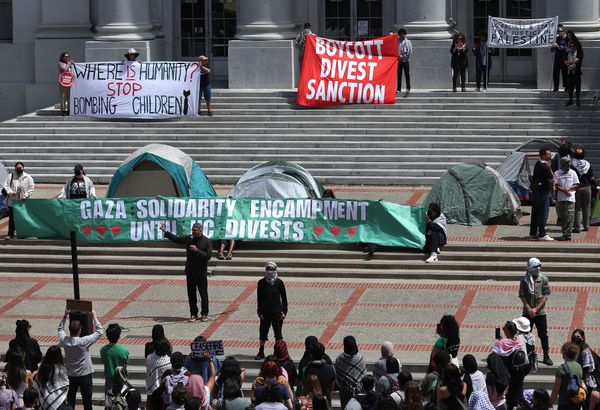
Canning the Commonwealth Games just as the FIFA Women’s World Cup exploded into mass media awareness suggests a generational shift in Australia’s cultural landscape. Suddenly we’ve discovered just how far away we are from Matilda the mascot’s 1982 Brisbane.
In reality, the future lit up this week was already here. Sports consumption has shifted from a localised, usually spectator-supported diversity to a globalised handful of televised elite sports that leave little attention left over to watch the more boutique (and usually amateur) sports such as those that make up most of the Commonwealth Games roster.
It’s a local showing of the battle for the world’s attention in an increasingly closed web. Profit-delivering content demands subscriptions from mass audiences: the bigger (the more global) the better. Those audiences want to pay for the best — and usually that means stuff happening somewhere else.
So far, Australia’s boutique sports (rugby league, Australian rules, netball) have been able to command domestic audiences big enough to keep up, but they have to keep running hard just to stay where they are.
The global sporting landscape just the past couple of weeks delivered Australian audiences to the Women’s World Cup, Wimbledon, the Tour de France and the Ashes. We take that access — together with round-by-round access to all games in our domestic sports — for granted, but historically it’s extraordinarily recent.
It’s been driven by a 30-year-old television revolution. The crash of free-to-air’s distribution monopoly in the early ’90s forced the three commercial networks into bidding wars — first with pay television, now with streaming — for the one body of content the consumption of which cannot easily be time-shifted. With the change in delivery came a dramatic upgrade in the viewing experience, particularly of sport — wide-screen format, flat-screen, high-definition — with 8K resolution now at the outer frontier of the abilities of our eyesight.
Cometh-the-hour and all that. In the early ’90s, that man was Rupert Murdoch, then trying to capture in television the global direct-to-consumer distribution he owned in print, eying historically undervalued broadcast rights for popular sports as bait.
Australians (at least in NSW and Queensland) will date the shift to the 1996-97 Super League wars. New Zealanders will nod to the broadcast dollars thrown at rugby union, turning the rigorously amateur code professional in 1995. But look instead to 1992 when Murdoch’s BSkyB paid £304 million for the first five years’ rights to the newly formed English Premier League (EPL). Six years earlier, annual broadcast rights had sold for £6.3 million. Now EPL broadcast revenues are thought to be about £10 billion over three years.
About half is for foreign broadcasts, including a reported A$58 million a year paid by Optus Sport. Optus also paid about $13 million for the Women’s World Cup (and on-sold free-to-air rights to Seven). By comparison, Ten is paying an average $40 million a year for both free-to-air and streaming rights for the A-leagues.
In Australia, the NRL and the AFL have traded on the broadcast boom with marginally different offerings. Last season (according to data aggregated by website Sports Industry AU), the NRL had more eyeballs (making it more valuable for streaming subscribers) while the AFL had more hours on screen (so more valuable for free-to-air ads).
Both codes have expanded quantity, with more teams in the men’s competition and (copying global codes such as football and cricket) parallel women’s league. Both are eager to expand internationally, with the NRL targeting the US and the AFL, pre-pandemic at least, working in China. Over the weekend, the federal government announced a $5.5 million grant to support rugby league in Papua New Guinea, with the goal of a team in the NRL.
Cricket, like tennis before it, has boomed as part of the elite club, due to the impact of the large Indian market (boosted by the now globally dominant Indian Premier League) and among the South Asian diaspora, particularly in the US where Major League Cricket has launched.
Money begets money. It’s made the elite sports targets for sports-washing. For example, Saudi Arabia’s sovereign wealth fund is spending up on football, both on big-name teams (such as the Premier League’s Newcastle United) and on star players such as Christian Ronaldo to upgrade its domestic competition. Its wealth fund has also effectively taken over the elite golf tour through LIV (pronounced “fifty-four”) Golf.
As sport has evolved into global entertainment, the mainstream media coverage has devolved into year-round sports-star-as-personality gossip-style reporting for low-engagement audiences. High-engagement audiences have turned to their more analytical fan-zine culture on social media platforms such as Reddit.
The New York Times is exploring a model sitting halfway between, announcing this month it was closing its 35-person sports department and replacing it with in-depth reporting from the 400-odd staff at The Athletic, which the Times bought in January last year.
Consumer preference to watch the best sport around in real time has been that rare programming win for linear television in the internet era. Now, like Optus Sport in Australia, new players are sniffing around. And Matilda? Last seen, she was helping out in a servo just outside Gympie.
Do you consume live sports — and if so, how? Let us know your viewing habits by writing to letters@crikey.com.au. Please include your full name to be considered for publication. We reserve the right to edit for length and clarity.







